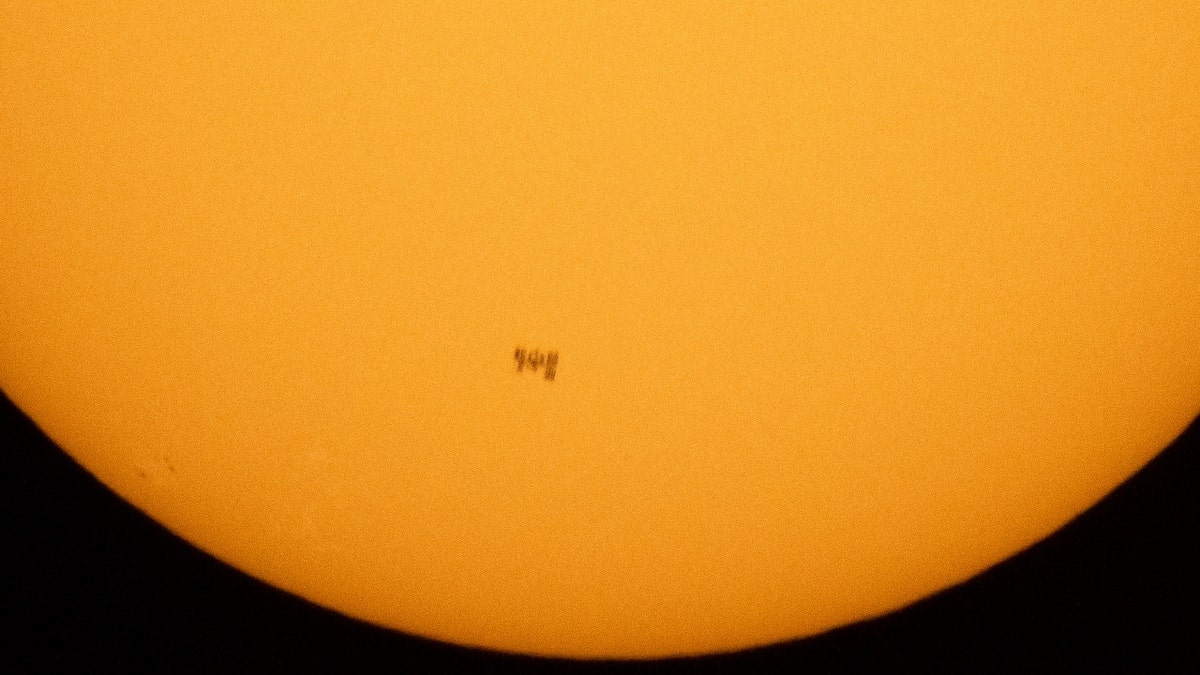Webb Space Telescope allows us to 'look into the past': Theoretical physicist
Theoretical physicist Dr. Michio Kaku explains the significance of new images provided by NASA's Webb Space Telescope on 'Sunday Night in America.'
Astronomers have observed the first direct evidence of a dying, ancient sun-like star devouring an exoplanet.
Using the Gemini South telescope in Chile – which is operated by the National Science Foundation's National Optical-Infrared Astronomy Research Laboratory (NOIRLab) – the scientists found the "smoking gun" of the event: a long and low-energy outburst from the star that is a signature of a planet skimming a star's surface.
Although past observations have confirmed the result of planetary engulfment when sun-like stars expand – up to 1,000 times the original size – and engulf the system's inner planets, astronomers had not seen it until now.
Such events are estimated to occur only a few times each year across the entire Milky Way.
WEBB SPACE TELESCOPE SEES MASSIVE PROTOCLUSTER OF GALAXIES IN THE EARLY UNIVERSE

The Duke of York takes a picture of the Gemini South telescope high up in the Andes mountains, at Cerro Pachon in Chile. (Photo by John Stillwell - PA Images/PA Images via Getty Images)
While a sun-like star fuses hydrogen into helium in its core for most of its life-pan, when the hydrogen core runs out it begins fusing helium into carbon and hydrogen fusion migrates to the star’s outer layers. That cause the layers to expand and transform the star into a red giant.
When the surface expands, interaction with a planet would lead to an outburst of energy and material – stopping the planet's orbital velocity and causing it to careen into the star.
Using the Gemini South Adaptive Optics Imager, NOIRLab found the outburst from the Milky Way star around 13,000 light-years away from Earth.

From images taken by NASA spacecrafts, this picture mosaic was created of six of the planets in our solar system and the Earth's moon. In the foreground is the Earth rising over the lunar surface with the sun flare at the edge of Earth. Venus is the first planet above the moon, and at the top left to right are the planets Jupiter, Mercury, Mars and Saturn. (Photo credits are as follows: Earth - Apollo 17; Lunar Surface - Apollo 8; Sun - Apollo 12; Venus - Pioneer Venus; Jupiter - Voyager I; Mercury - Mariner 10; Saturn - Pioneer 11.)
The first indications of such an event were discovered by images from the Zwicky Transient Facility and archival infrared coverage from NASA’s Near-Earth Object Wide-field Infrared Survey Explorer confirmed the engulfment event, named ZTF SLRN-2020.
ASTRONOMERS DISCOVER 25 NEW REPEATING FAST RADIO BURSTS
The outburst lasted approximately 100 days, with the characteristics of its lightcurve and ejected material providing insight into the mass of the star.
From analysis, the team estimated that the progenitor star is about 0.8−1.5 times the mass of the sun and that the engulfed planet was 1−10 times the mass of Jupiter.

In this handout image provided by NASA, the International Space Station is seen in silhouette as it transits the sun at roughly five miles per second, Friday, June 25, 2021, from near Nellysford, Virginia. (Photo by Joel Kowsky/NASA via Getty Images)
Such a devouring serves as a warning ahead of the sun's death in about 5 billion years from now, according to the astronomers.
CLICK HERE TO GET THE FOX NEWS APP
"I think there's something pretty remarkable about these results that speaks to the transience of our existence," Ryan Lau, NOIRLab astronomer and co-author on this study, said in a statement. "After the billions of years that span the lifetime of our solar system, our own end stages will likely conclude in a final flash that lasts only a few months."
The work was published in the journal Nature and researchers are searching for similar events happening elsewhere in the cosmos with improved metrics.





















